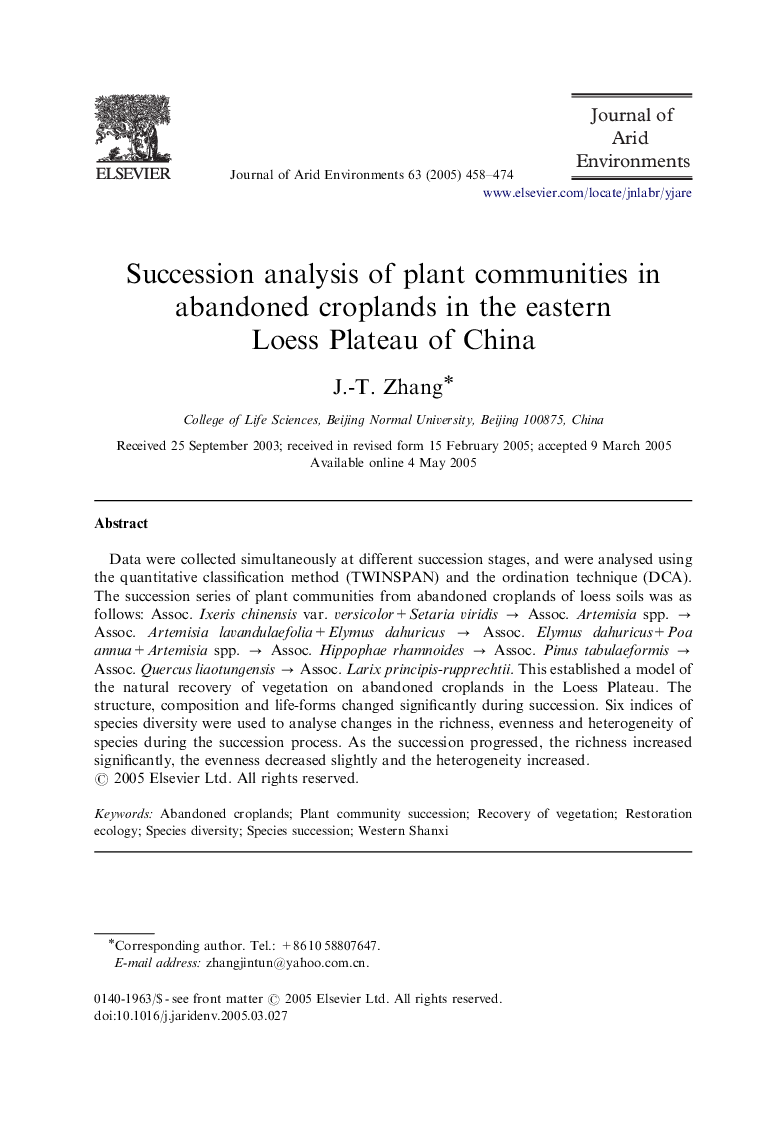| Article ID | Journal | Published Year | Pages | File Type |
|---|---|---|---|---|
| 9447846 | Journal of Arid Environments | 2005 | 17 Pages |
Abstract
Data were collected simultaneously at different succession stages, and were analysed using the quantitative classification method (TWINSPAN) and the ordination technique (DCA). The succession series of plant communities from abandoned croplands of loess soils was as follows: Assoc. Ixeris chinensis var. versicolor+Setaria viridis â Assoc. Artemisia spp. â Assoc. Artemisia lavandulaefolia+Elymus dahuricus â Assoc. Elymus dahuricus+Poa annua+Artemisia spp. â Assoc. Hippophae rhamnoides â Assoc. Pinus tabulaeformis â Assoc. Quercus liaotungensis â Assoc. Larix principis-rupprechtii. This established a model of the natural recovery of vegetation on abandoned croplands in the Loess Plateau. The structure, composition and life-forms changed significantly during succession. Six indices of species diversity were used to analyse changes in the richness, evenness and heterogeneity of species during the succession process. As the succession progressed, the richness increased significantly, the evenness decreased slightly and the heterogeneity increased.
Related Topics
Physical Sciences and Engineering
Earth and Planetary Sciences
Earth-Surface Processes
Authors
J.-T. Zhang,
